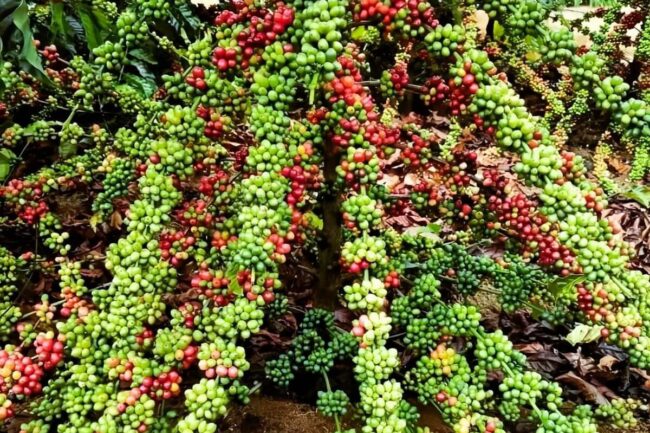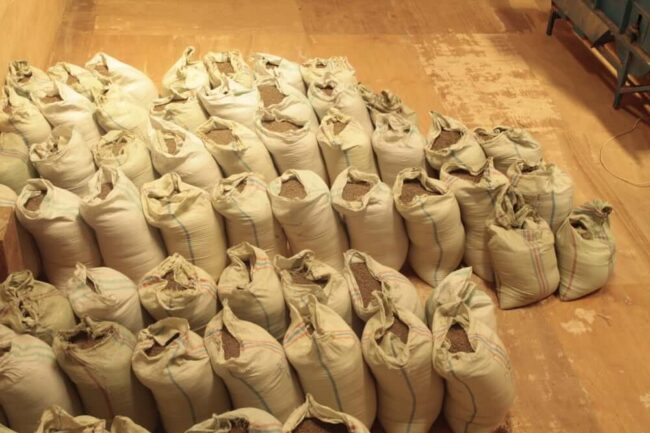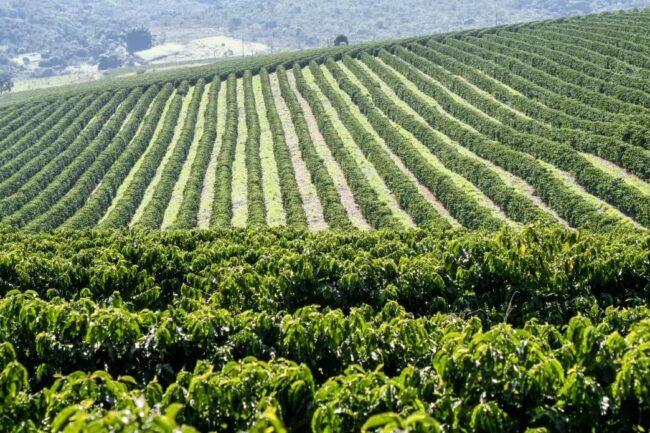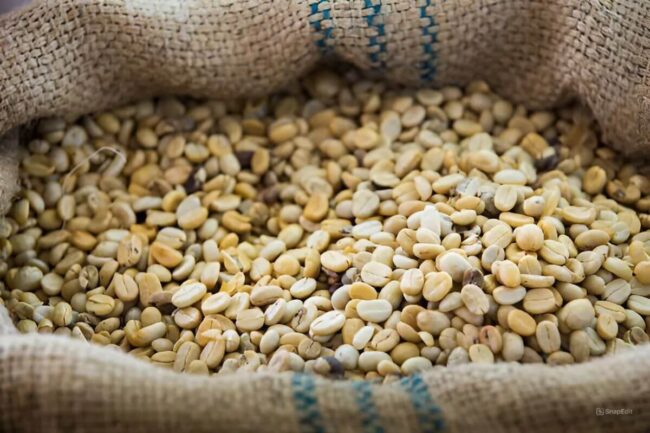July arabica coffee on Tuesday closed up +1.45 (+0.74%), and July ICE robusta coffee closed down -163 (-4.60%).
Coffee prices on Tuesday settled mixed, with robusta falling to a 6-week low. Robusta coffee closed sharply lower Tuesday as it reopened after being closed on Monday for a holiday. A rebound in ICE coffee inventories has eased supply concerns and is bearish for prices after ICE-monitored arabica coffee inventories rose to a 1-year high Tuesday, and ICE-monitored robusta coffee inventories rose to a 5-month high.
Arabica coffee price Tuesday recovered from a 5-week low and moved moderately higher as short covering emerged when updated weather forecasts pushed back the chances for rain in Brazil until late next week. Dryness in Brazil could reduce coffee yields, and it is bullish for prices. Somar Meteorologia reported Monday that Brazil’s Minas Gerais region received no rainfall or 0% of the historical average in the past week, the second consecutive week the area has received no rainfall. Minas Gerais accounts for about 30% of Brazil’s arabica crop.
Coffee prices have a negative carryover from last Friday when the International Coffee Organization (ICO) reported that global Mar coffee exports rose +8.1% y/y to 12.99 million bags and Oct-Mar global coffee exports were up +10.4% y/y at 69.16 million bags.
Coffee prices rallied sharply in April, with arabica coffee posting a new 2-year high and nearest-futures (K24) robusta coffee posting a new all-time high. Coffee prices surged on coffee crop concerns in Brazil and Vietnam. Robusta coffee surged to a new record high on fears that excessive dryness in Vietnam will limit the country’s robusta coffee production.
Tight robusta coffee supplies from Vietnam, the world’s largest producer of robusta coffee beans, are a bullish factor. On March 26, Vietnam’s agriculture department projected that Vietnam’s coffee production in the 2023/24 crop year would drop by -20% to 1.472 MMT, the smallest crop in four years, due to drought. Also, the Vietnam Coffee Association said that Vietnam’s 2023/24 coffee exports would drop -20% y/y to 1.336 MMT. In addition, Marex Group Plc forecasts a global 2024/25 robusta coffee deficit of -2.7 million bags due to reduced output in Vietnam.
Coffee inventories have rebounded from historically low levels. ICE-monitored robusta coffee inventories on February 21 fell to a record low of 1,958 lots, although they recovered to a 5-month high last Friday of 4,059 lots. Also, ICE-monitored arabica coffee inventories fell to a 24-year low of 224,066 bags on November 30, but they recovered to a 1-year high Tuesday of 701,423 bags.
There has recently been some bearish export news. Cecafe reported on April 10 that Brazil’s Mar green coffee exports jumped +41% y/y to 3.9 million bags. Brazil is the world’s largest producer of arabica coffee beans. Also, Brazil’s exporter group Comexim, on February 1, raised its Brazil 2023/24 coffee export estimate to 44.9 million bags from a previous estimate of 41.5 million bags. In a bearish factor for robusta, Vietnam’s General Statistics Office reported last Monday that Vietnam’s Apr coffee exports rose +3.9% y/y to 170,000 MT, and Vietnam’s Jan-Apr coffee exports are up +5.4% y/y to 756,000 MT.
This past year’s El Nino weather event has been bullish for coffee prices. An El Nino pattern typically brings heavy rain to Brazil and drought to India, negatively impacting coffee crop production. The El Nino event has brought drought to Vietnam’s coffee areas this year, according to an official from Vietnam’s Institute of Meteorology, Hydrology, and Climate Change.
In a bearish factor, the International Coffee Organization (ICO) projected last Friday that 2023/24 global coffee production would climb +5.8% y/y to 178 million bags due to an exceptional off-biennial crop year. ICO also projects global 2023/24 coffee consumption will rise +2.2% y/y to 177 million bags, resulting in a 1 million bag coffee surplus.
The USDA’s Foreign Agriculture Service (FAS), in its biannual report released on December 21, projected that world coffee production in 2023/24 will increase +4.2% y/y to 171.4 million bags, with a +10.7% increase in arabica production to 97.3 million bags, and a -3.3% decline in robusta production to 74.1 million bags. The USDA’s FAS forecasts that 2023/24 ending stocks will fall by -4.0% to 26.5 million bags from 27.6 million bags in 2022-23. The USDA’s FAS projects that Brazil’s 2023/24 arabica production would climb +12.8% y/y to 44.9 mln bags due to higher yields and increased planted acreage. The USDA’s FAS also forecasts that 2023/24 coffee production in Colombia, the world’s second-largest arabica producer, will climb +7.5% y/y to 11.5 mln bags.
Source: Rich Asplund – Barchart




